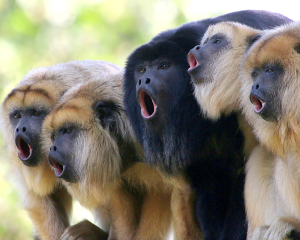
General Characteristics
Howler monkeys are medium to large-sized monkeys with robust bodies and prehensile tails, which they use for grasping and holding onto branches.
They have a distinct feature called an enlarged hyoid bone in their throats, which helps amplify their howling sounds.
Their fur color varies between species, ranging from black, brown, or reddish-brown to golden or yellowish tones.
Males are typically larger than females, with males weighing between 15 to 22 pounds (7 to 10 kg) and females weighing 11 to 17 pounds (5 to 7 kg).
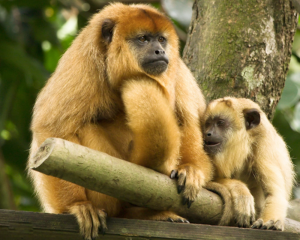
Behavior
Howler monkeys are social animals that live in groups called troops or bands, typically ranging from 6 to 15 individuals but sometimes as many as 30.
Their loud howls serve as a form of communication, primarily to mark territory and warn off other groups. This vocalization is more common at dawn or dusk but can occur throughout the day.
They are diurnal, meaning they are active during the day, with most of their activities involving feeding, resting, and grooming.
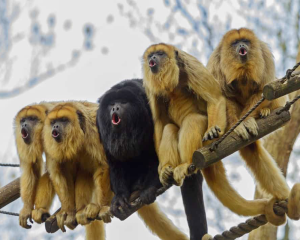
Habitat
Howler monkeys are found in the forests of Central and South America, ranging from southern Mexico to northern Argentina.
They are highly arboreal, meaning they spend most of their lives in the tree canopy, rarely descending to the ground.
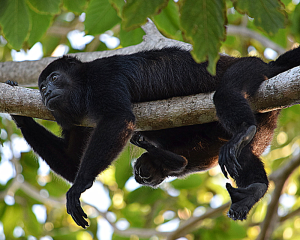
Diet
Howler monkeys are primarily florivorous, meaning they mainly eat leaves. However, they also consume fruits, flowers, and nuts when available.
They have a slow metabolism compared to other monkeys, which allows them to digest tough leaves and extract necessary nutrients. Their diet consists mostly of young, tender leaves that are easier to digest.
The low energy content of their diet leads to relatively low activity levels compared to other primates.
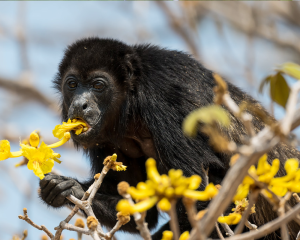
Species of Howler Monkeys
The Howler Monkey species include the Black Howler Monkey (Alouatta caraya), found in Argentina, Bolivia, and Brazil, with males being black and females/youths yellowish or tan. Other species include the Red Howler Monkey (Alouatta seniculus), Mantled Howler Monkey (Alouatta palliata), Guatemalan Black Howler Monkey (Alouatta pigra), Yucatan Black Howler Monkey (Alouatta pigra), and Brown Howler Monkey (Alouatta guariba), each with distinct characteristics and geographic ranges.
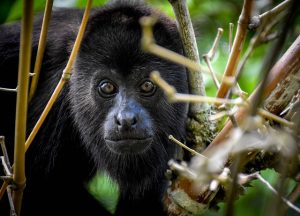
Conservation Status
The conservation status of howler monkeys varies by species and region. Some species are considered “Least Concern,” while others are “Endangered” or “Critically Endangered” due to habitat loss, hunting, and fragmentation of their natural environments.
Deforestation for agriculture, logging, and human settlement has greatly impacted their habitats, leading to a decline in populations.
Conservation efforts focus on habitat preservation, anti-poaching measures, and research to better understand their ecology and behavior.
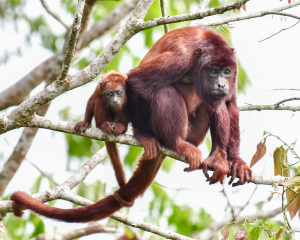
Interesting Facts
Howler monkeys are among the loudest animals in the world. Their calls can be heard up to 5 kilometers (3 miles) through dense forest.
Their howling not only serves as a territorial call but also helps maintain group cohesion by keeping members in contact while foraging.
Howler monkeys have a prehensile tail, which acts like a fifth limb and is capable of grasping objects and supporting the monkey’s entire body weight.
Howler monkeys are a fascinating example of primate adaptation and behavior, with their vocal abilities and arboreal lifestyles making them unique among New World monkeys.
